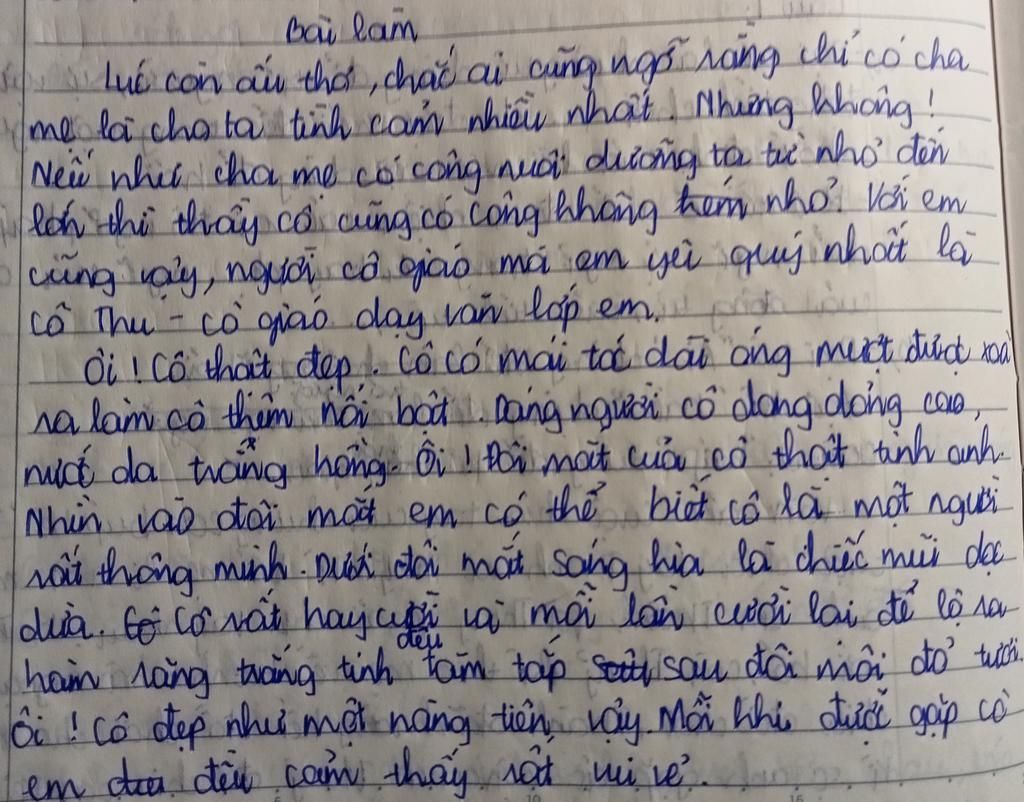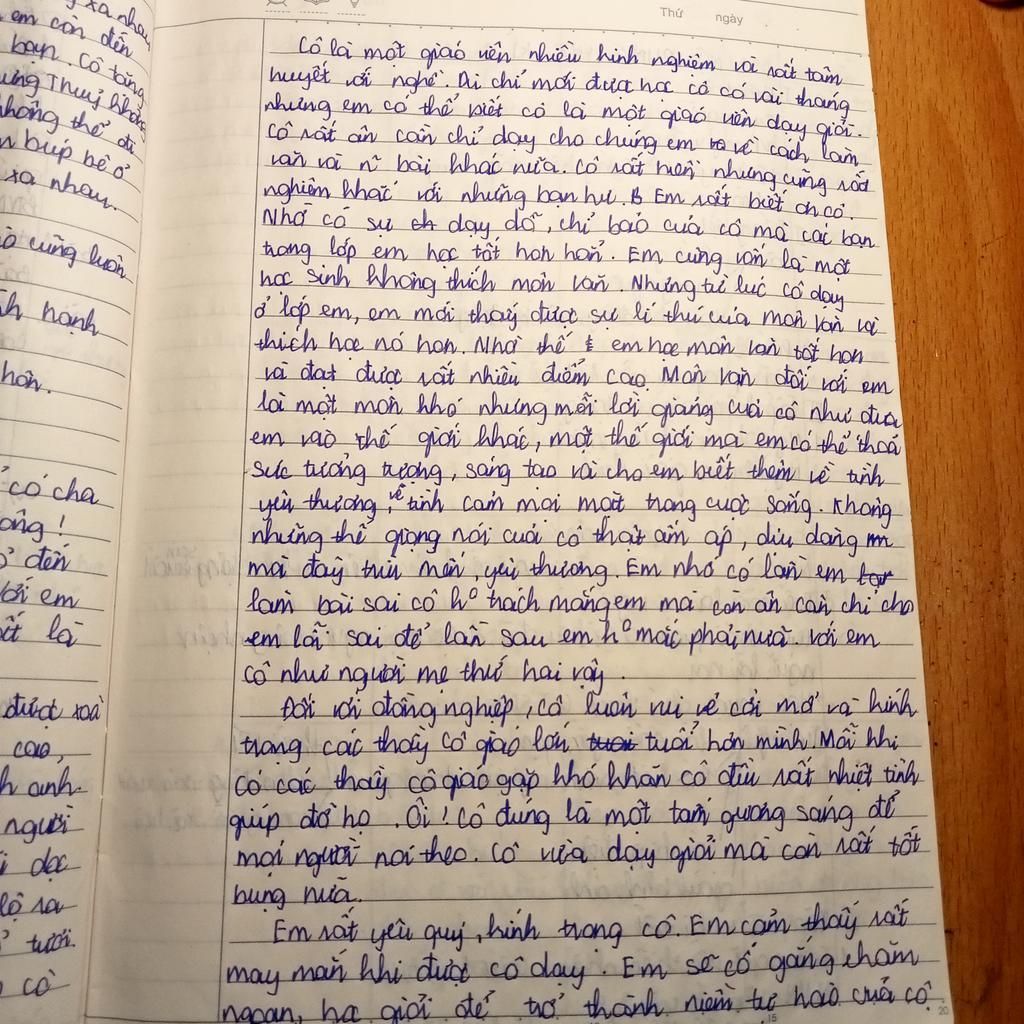Cảm nghĩ về một cô giáo mà em yêu quý( cô ko có dạy ở trường )
Hai trang vở nhé , ko copy, lấy mạng , tự làm có chữ ký . Hay và đúng yêu cầu mik cho ctlhn vote
2 câu trả lời
"Khi thầy viết bảng bụi phấn rơi rơi
Có hạt bụi nào rơi trên bục, có hạt bụi nào rơi trên tóc thầy”
Những ca từ ca ngợi tình cảm thiêng liêng của những người Thầy luôn là đề tài được các tác giả đưa vào thơ ca. Lời bài hát trên được trích từ bài hát “Bụi phấn” với nội dung thể hiện tình cảm của người học trò dành cho người Thầy của mình và đó cũng là những tâm tư em dành cho một người thầy giáo lớp 5 của em .
Tên đầy đủ của thầy là Nguyễn Xuân Tình, thầy là giáo viên dạy môn Toán năm nay tuy đã bước sang tuổi 50 nhưng phong thái của thầy còn rất nhanh nhẹn và chính xác đến từng con số. Bản chất môn Toán là môn số học rất cứng nhắc lại luôn đòi hỏi sự chính xác và mạch lạc thế nhưng qua cách dạy của thầy nó lại trở thành môn học em yêu thích nhất, thầy đưa những công thức cứng nhắc thành những bài vè để chúng em dễ dàng tiếp thu kiến thức hơn, sự tận tuỵ với nghề với cả lớp khiến cho không khí lớp học bớt căng thẳng đi rất nhiều, đôi khi thầy còn như người cha lo cho chúng em từ ly nước chúng em trong những ngày hè nóng bức. Để không phụ lòng của thầy bằng cách luôn cố gắng học tập chăm chỉ thì chúng em còn đặt cho thầy một cái tên gọi rất gần gũi thân thương là “ Cha Già”, bởi dĩ thầy với chúng em đã quá đỗi là một gia đình, hình ảnh mà người Cha Già ấy trên bục giảng hăng say đến quên những hạt bụi phấn bám cả lên áo thầy khiến thầy trông già đi như vẽ lên một bức mang giá trị tinh thần tuyệt vời. Dù biết rằng còn nhiều khó khăn phía trước hơn nữa nhưng những gì thầy mang lại là động lực tuyệt vời để chúng em vượt qua, chính nhờ thầy lái đò mà mọi khó khăn chúng em đều vượt qua tất cả để cập bến thành công, nhìn thầy nở nụ cười mỗi khi cả lớp hoàn thành suất sắc bài học, bài thi hay là cả những khi vài giọt mồ hôi lăn tăn trên trán là khi mà những người học trò như tụi em cảm thấy hạnh phúc và kính yêu thầy biết nhường nào.
Đó là thầy giáo em rất yêu quý thầm mong thầy luôn khỏe và một thời gian nữa khi quay lại trường em vẫn có thể thấy hình ảnh thầy đứng trên bục giảng cùng các em lớp dưới, giờ đây cứ mỗi lần đến dịp 20-11 cho dù thế nào em cũng không quên rằng đang có một người Cha Già luôn đón chào mình phía trước.



